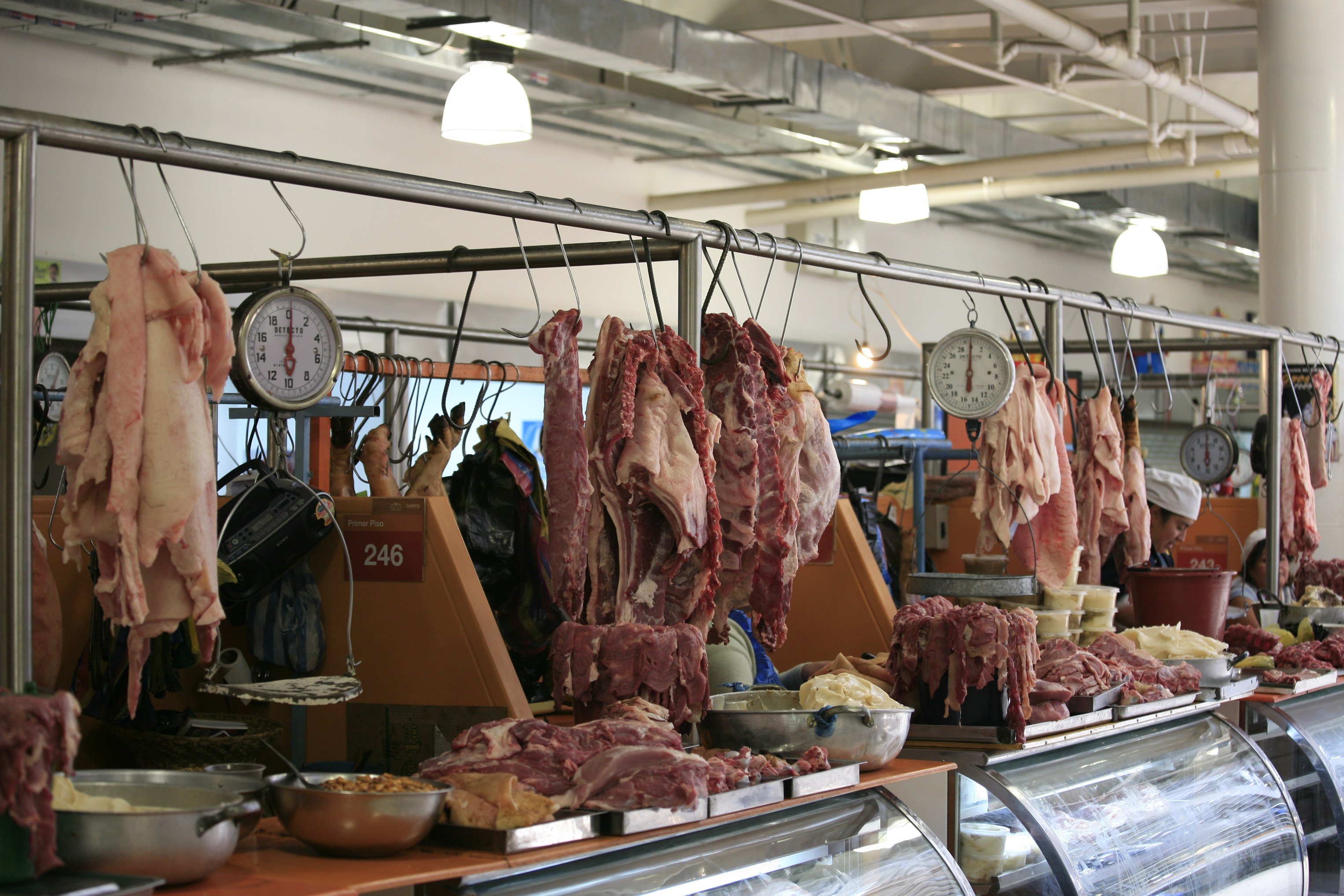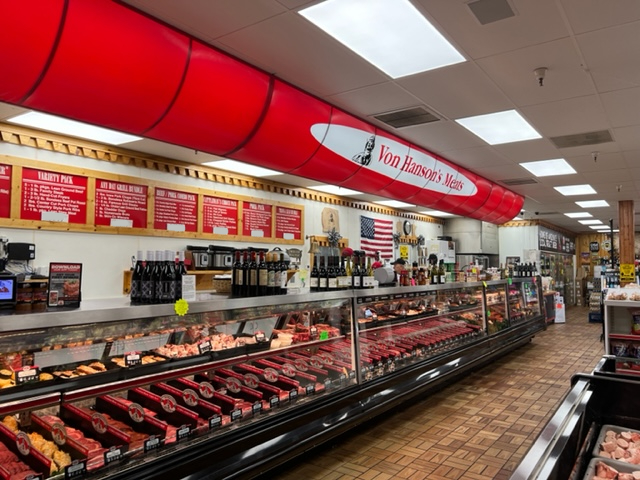Discover the Art of the Butcher's Cut in a Modern Meat Market
In the ever-evolving landscape of contemporary meat markets, the butcher's cut has transcended its conventional roots, combining age-old workmanship with contemporary techniques. bagley farms meat market edwardsville il. Today's butchers are not just processors of meat; they are knowledgeable artisans who stress sustainability and ethical sourcing. Their knowledge in selecting and preparing cuts tailored to particular culinary demands provides an unmatched dining experience. What really sets the modern-day butcher apart is their ability to build a much deeper link in between consumers and the beginnings of their meat. Exactly how do these masters equilibrium practice with advancement, and what effects does this have for the future of meat usage?
Evolution of Butchery Techniques

The mid-20th century saw butchery techniques even more improved by scientific understandings right into muscle mass biology and meat aging, enhancing both inflammation and taste. Innovations like vacuum cleaner product packaging and refrigeration prolonged product shelf-life, enabling butchers to expand offerings and improve top quality control. This duration additionally noted the rise of specific equipment, such as band saws and meat slicers, which boosted accuracy and efficiency in meat handling.
Electronic systems now help in tracking pet provenance and optimizing cuts to meet specific customer choices. In addition, a resurgence in artisanal butchery has emerged, mixing typical skills with contemporary knowledge to cater to customers seeking ethical and sustainable meat alternatives.

Recognizing Meat Cuts

Recognizing the complexities of meat cuts is essential for both butchers and customers seeking top quality and worth. Each cut comes from a various part of the pet, presenting one-of-a-kind tastes, structures, and cooking methods. Proficiency of these distinctions not only boosts culinary experiences however also takes full advantage of the utility of each carcass. For butchers, precise cuts mirror ability and respect for the craft, making certain very little waste and optimal return.
The main categories of meat cuts consist of primal, sub-primal, and retail cuts. Primitive cuts, such as the loin, rib, and chuck, are the large areas at first divided from the carcass. Butchers then damage these down even more right into sub-primal cuts, prior to finally generating retail cuts offered to customers, like ribeye or tenderloin. Each stage needs cautious focus to anatomical framework and muscle make-up.
Comprehending muscular tissue composition is crucial; muscle mass made use of more frequently by the pet tend to be tougher and are best matched for slow-moving cooking techniques, while less-used muscular tissues, like those found in the loin, are much more tender and ideal site web for barbecuing or roasting. Knowledge with these distinctions equips consumers to make enlightened selections, enhancing their culinary ventures.
Picking Quality Meat
Selecting the right meat entails even more than just selecting an aesthetically attractive item from the display screen. The art of choosing top quality meat needs a discerning eye and expertise of certain characteristics that signify quality and excellence.
Second of all, think about the marbling, which describes the white flecks of fat within the muscle. Correct marbling is an essential indication of inflammation and flavor, as it thaws during food preparation, boosting the meat's juiciness. Keep in mind, greater marbling commonly correlates with exceptional high quality cuts, such as USDA Prime.
Texture is one more vital factor; meat ought to really feel firm to the touch, not slimed or extremely soft. Furthermore, bear in mind the fragrance. Fresh meat needs to have a clean, neutral scent, complimentary from any sour or off-putting smells.
Matching Cuts With Food Preparation Methods
Effectively pairing cuts of meat with the proper food preparation approaches is necessary for achieving ideal taste and appearance. Recommended Reading Different cuts vary in inflammation, marbling, and connective cells content, each requiring certain strategies to unlock their capacity. As an example, tender cuts like filet mignon and ribeye, with their inherent marbling, benefit from high-heat, quick-cooking techniques such as cooking or pan-searing. These techniques improve the meat's all-natural tastes and ensure a juicy finish.
Alternatively, harder cuts like brisket and chuck roast are abundant in collagen, which damages down right into gelatin when cooked slowly. These cuts are optimal for braising or sluggish roasting, allowing the meat to tenderize in time and develop deep, complex tastes. Cuts such as brief ribs and pork shoulder make out well with slow-cooking approaches, where expanded cooking times change their durable appearances right into delicious meals.
Lamb shanks and oxtail, which need prolonged cooking to tenderize, are perfect prospects for cooking or sluggish simmering. These methods coax out rich, passionate flavors while maintaining dampness. By comprehending the special attributes of each cut, chefs and home chefs alike can boost their culinary creations, ensuring each recipe is both satisfying and memorable.
The Butcher's Duty Today
Browsing the developing landscape of the modern meat market, the butcher's duty today prolongs past simple preparation of cuts. Contemporary butchers are cooking artisans, teachers, and advocates for lasting practices. They link the space between the ranch and the fork by ensuring moral sourcing, comprehending animal husbandry, and focusing on transparency in the supply chain. This change shows the expanding consumer need for high quality over amount, where provenance and animal well-being are extremely important.
In enhancement to crafting accurate cuts, butchers currently involve directly with consumers, providing cooking advice and tailoring options to suit private requirements and choices. Their expertise in meat aging, marbling, and flavor profiles encourages consumers to make informed choices, boosting their culinary experiences. This tailored solution exemplifies the butcher's developing duty as a relied on consultant in the kitchen.
Furthermore, butchers are crucial in minimizing waste, utilizing whole pets to develop varied products such as sausages and stocks - bagley farms meat market edwardsville il. This extensive technique not just values the pet yet also aligns with contemporary sustainability goals. By doing this, the contemporary butcher personifies both practice and innovation, adapting to an ever-changing market while maintaining the virtuosity and honesty of their craft

Conclusion
The modern butcher's craft elaborately weaves conventional techniques with modern-day advancements, emphasizing lasting methods and ethical sourcing. Proficiency in comprehending diverse meat cuts and high quality indicators encourages butchers to supply informed suggestions, aligning certain cuts with optimal food preparation methods. This proficiency not just elevates cooking experiences but additionally strengthens the connection in between consumers and image source the beginnings of their food. By honoring historical techniques while accepting modern demands, the butcher's function remains crucial in today's sophisticated meat market.
Comments on “Obtain the Best Deals on Fresh Meat at Bagley Farms Meat Market Edwardsville IL”